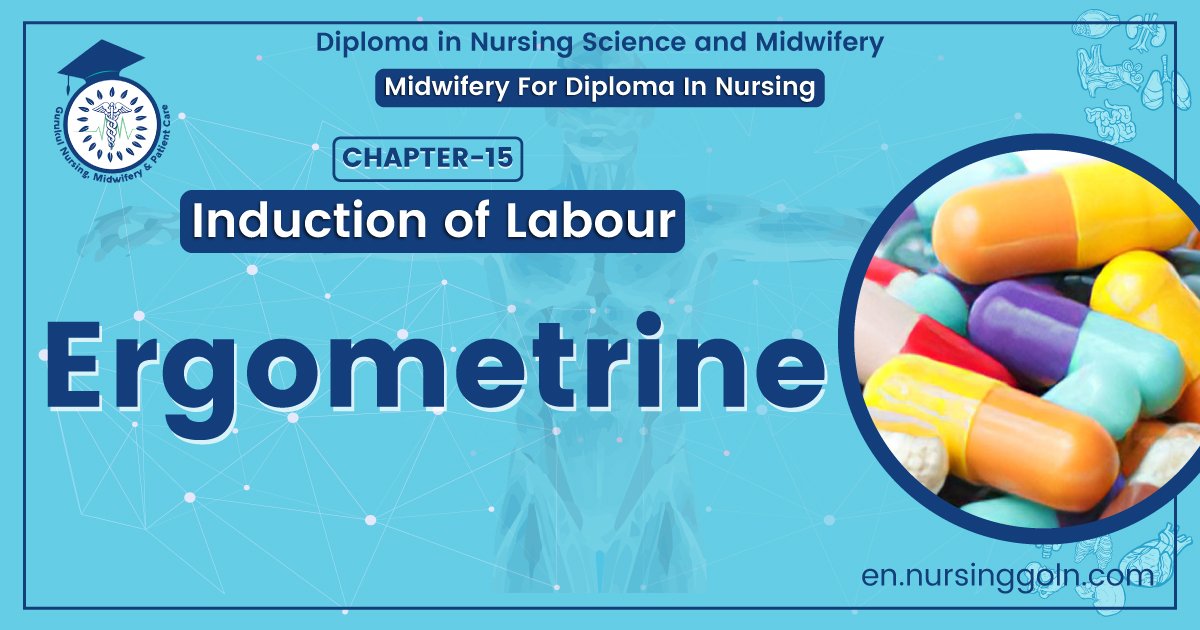Definition of Ergometrine – This course is designed to understand the care of pregnant women and newborn: antenatal, intra-natal and postnatal; breast feeding, family planning, newborn care and ethical issues, The aim of the course is to acquire knowledge and develop competencies regarding midwifery, complicated labour and newborn care including family planning.

Definition of Ergometrine
Ergometrine:
It is an ergot derivative.
Mode of action:
- In small dose: Rhythmic contraction and relaxation of uterine muscle.
- In large dose: Prolong and powerful contraction of uterine muscle.
Indications:
- Therapeutic: To stop atonic uterine bleeding following delivery, abortion or expulsionof hydatidiform mole.
- Prophylactic: It is used as prophylaxis against PPH in active management of third stageoflabour.
- Severe toxaemia & eclamsia there may be sudden rise BP.
- Rh negative mother-there is a chance of foeto-maternal microtranfusion.
- Severe hypertensive disorders.
Complication:
- Gangrene of the toes due of vasoconstrictive effect.
- Rise of blood pressure.
- Interferes with lactation if used in puerperium for long time.
- Hour-glass contraction of uterus and retained placenta.
Routes of administration: IV/IM oral route.

Definition of Prostaglandin
Use of prostaglandin in obstetrics:
- Induction of labour.
- Termination of molar pregnancy.
- Induction of abortion.
- Cervical ripening prior to induction of labour or abortion.
- Acceleration of labour.
- Management of atonic PPH.
- Medical management of tubal ectopic pregnancy.
Contraindication of prostaglandin:
Absolute:
- Hypersensitivity of this compound.
- Asthma
- Acute PID
Relative:
- Hypertension
- Cardiovascular disease.
- Renal disease
- Peptic ulcer
- Jaundice
- Uterine scar-

Complications of prostaglandins:
- Severe menstrual cramp.
- Long vaginal bleeding.
- Fever
- Flushing
- Bronchospasm
- Dizziness
- Hypotension
- Syncope
- Diarrhea
- Vomiting
- Hypersensitivity reaction.
Read More.
